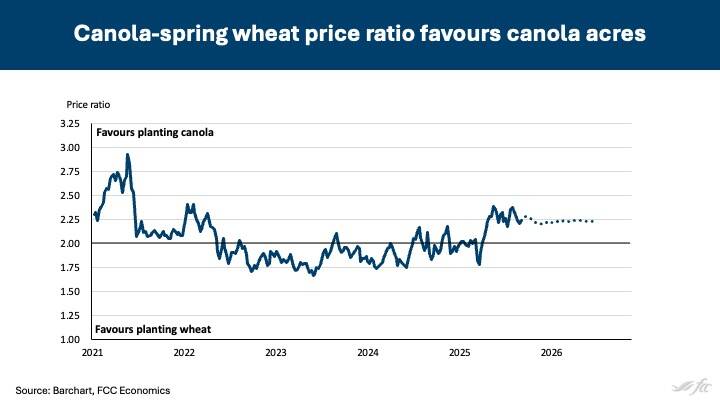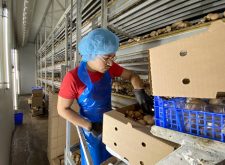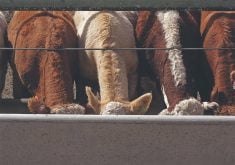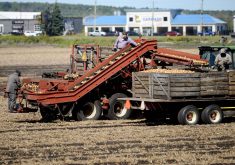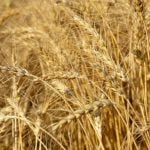Forecasts by a major Canadian farm lender featured good and bad news on the financial health of both farmers and Canadians at large.
Why it matters: Canadian grain farmers are being warned to brace for a profit crunch this year with low commodity prices and high input costs.
On the plus side, Farm Credit Canada’s (FCC) economic update Sept. 18 highlighted the Bank of Canada’s easing of interest rates, the rebuilding of the Canadian cattle herd and the high productivity of the pork sector.
Read Also
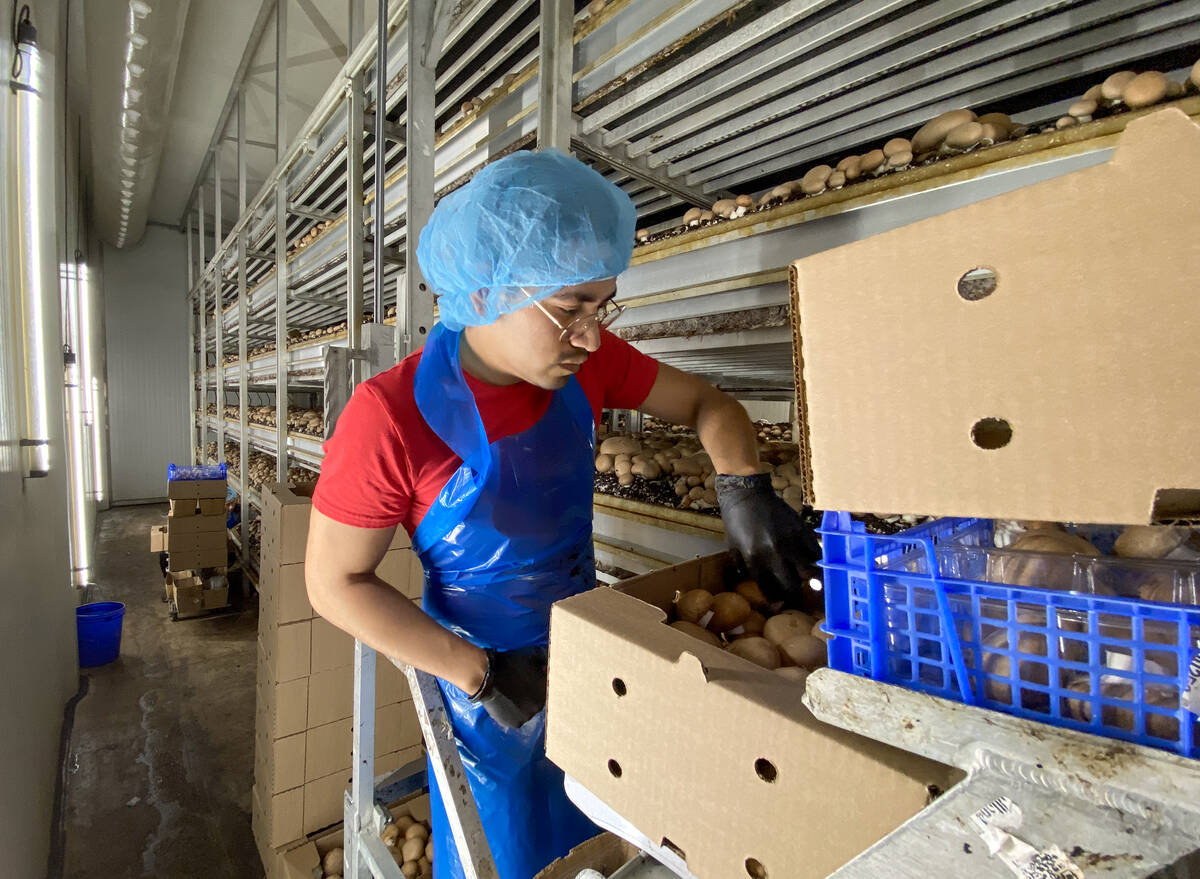
Ontario’s other economic engine: agriculture and food
Ontario Federation of Agriculture president, Drew Spoelstra, says Ontario’s agriculture and agri-food sector should be recognized for its stability and economic driving force.
Less encouraging were predictions of substandard national economic growth and fallout from United States and Chinese tariffs, among other challenges.
FCC executive vice-president J.P. Gervais painted a somewhat grim picture of Canada’s short-term economic sustainability as the country heads towards its third — possibly fourth — year of sub-two per cent growth.
He pegged overall economic growth in 2025 at 1.1 per cent, just shy of the Bank of Canada’s 1.3 per cent forecast.
FCC estimated one per cent growth in 2026, virtually in line with the BoC’s estimates. Both forecasts represent less economic growth than seen in 2023 and 2024, years that saw increases of 1.5 and 1.6 per cent, respectively.
“If you think of two per cent as the potential of the economy, we’re really going under the speed limit,” said Gervais, who placed much of the blame on tariffs.
Gervais urged producers not to get too comfortable with agri-food’s relative tariff shelter when it comes to the U.S. (97 per cent of food enjoys the tariff exception for Canada-U.S.-Mexico Agreement eligible goods). For one matter, there’s still considerable confusion around U.S. tariffs on both sides of the border.
“Second of all, there’s also uncertainty with regards to what is going to happen in the future. And with uncertainty comes kind of a little reluctance on the part of businesses to invest in their business, just waiting to see how policy is going to evolve on the U.S. side,” he said.
Gervais did, however, praise the Building Canada Act, intended to fast-track the building of Canadian infrastructure, as a “great first step” that will reverberate across industries, including agriculture.
Inflation ‘subdued’
That stimulus is going to take time though. During which, it will be up to the Bank of Canada — who Gervais commended for its Sept. 17 overnight rate reduction of 25 basis points — to find ways to reignite the country’s economy.
To that end, Des Sobool, deputy chief economist at FCC, forecasted the central bank will cut interest rates by another 50 basis points by the end of 2025.
“This is really in response to a slowing economy,” he said.
Sobool described inflation in Canada as “subdued,” particularly where it comes to core inflation, the BoC’s preferred metric.
“If you look at more recent data from core inflation, you can see pressure’s being taken off. So that’s the good news story,” he said.
Farm financials
Based on the first seven months of 2025, general crop production is expected to increase marginally from 2024. Sobool called that a “good news story” signaling relatively stable production conditions.
“This year we had weather that would allow for increased yield … not to discount that there were certain areas of the country that still did experience drought, still had some excess moisture, but overall things did improve production-wise compared to last year,” he said.
Crop carry-in stocks, the amount of crop going into a new marketing year that’s left over from the previous year, were down 20 per cent coming into 2025, Sobool also noted.
“So you combine that with prices that are generally being pressured lower, that’s going to impact revenues this year,” he said.
Receipts are down for grains and oilseeds, explained Gervais, with an estimated six per cent drop off a further 10.8 per cent decline in 2024. He also blamed that on lower commodity prices and carry-in stocks.
However, he encouraged farmers to focus less on individual numbers and more on trends.
“I think the relevant thing to do here when we show you predicted profitability trends is to actually take a step back, look at the trend and say, ‘Oh, is it going up or down relative to where I’m at today?’ And if it’s going up and down based on what you see up on the screen, then it should be going up and down as well for your own operation.”
U.S. corn has influence
It’s instructive to peek across the 49th Parallel when forecasting production. This year saw a 90-year high in U.S. corn acreage, driving record yields. Total U.S. corn production is shaping up to be about 427 million tonnes with the year-over-year increase alone representing 50 million tonnes.
“That’s the equivalent of the entire production of wheat and canola in Canada,” noted Sobool.
“It just shows you how impactful, how large the U.S. ag sector is and how their production can influence global prices.”
However, that high level of production is also causing U.S. corn prices and futures to trend lower. “It’s quite volatile,” he said. “(Prices are) approaching the five-year minimum as opposed to the five-year maximum.”
Sobool believes this is a symptom of markets coming off a “commodity super cycle” rooted in the COVID-19 pandemic and Russia’s ongoing war against Ukraine, both of which caused prices to climb.
What this all means is higher stock-to-use ratios, meaning more supply than demand, for corn in the U.S.
Canadian cattle herd rebuilds while U.S. falls behind
Cattle prices have been good, especially for cow-calf farmers in the last few years, and Canadian beef producers are finally starting the long process of rebuilding the country’s cattle herd, said Sobool.
“(Inventory) was up about one per cent. It doesn’t sound like much, but just to highlight, this is actually the first increase we’ve seen since 2021,” he noted.
Dairy crossbreds have seen tremendous demand over the past few years, as the beef cow herd has declined in Canada, so the expansion of the beef cow herd could affect prices for dairy-beef animals.
Producers were sending fewer beef cows and heifers to slaughter (44.6 per cent) in the first part of 2025 and increasing heifer retention by two per cent.
“Two per cent is still a pretty small number, but it’s still that number of hope,” he said.
However, if you combine the highly-interconnected U.S. and Canada herds, the figure becomes less rosy. In the U.S., which has faced similar herd losses, the percentage of cows and heifers sent to slaughter is between 48 and 49 per cent.
“We have a magic number: it’s 47 per cent,” explained Sobool.
“If less than 47 per cent of cows and heifers are being sent to slaughter, that’s a good indication that we’re going to see the herd being rebuilt in North America. We’re not seeing that yet, and so this is going to contribute to either a flat or maybe still declining North American herd.”
Hogs trying to bounce back
The Canadian hog sector is slowly but surely on the rebound after a rough year in 2023, said Gervais. Hog inventory is down one per cent year over year from 2024, but Canadian hog producers are making “significant productivity gains,” he noted.
“If you look at pigs per litter, for example, we are around 14 now. It’s a significant upgrade in terms of productivity and where we were just a couple of years ago.”
Meanwhile, U.S. hog inventories are up, which Gervais calls a good thing for the Canadian sector. “The futures markets don’t necessarily seem to be phased by these higher supply numbers,” he said.
Gervais recommended, however, that producers keep an eye on China. Although the country started imposing 25 per cent tariffs on its pork imports from Canada in March, export volumes from Canada to China increased moderately in the first five months of the year.
Some export destinations such as Japan and South Korea, are doing very well, said Gervais.
“Both are showing year-over-year, for the first seven months of the year, more than 25 per cent growth. And the fact of the matter is that consumer demand is still relatively strong, given that retail prices are not as high for pork as they are for competing proteins.”


